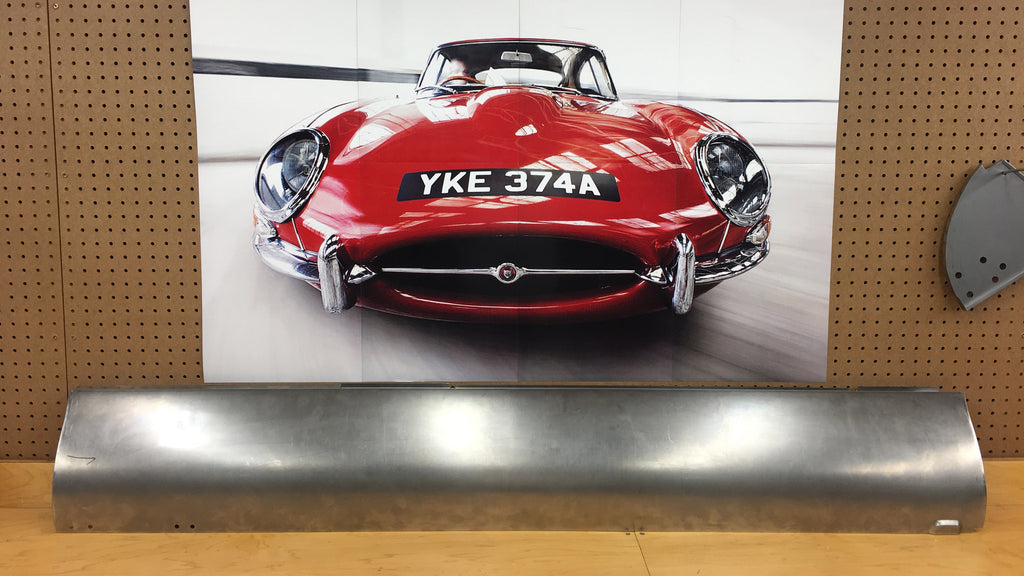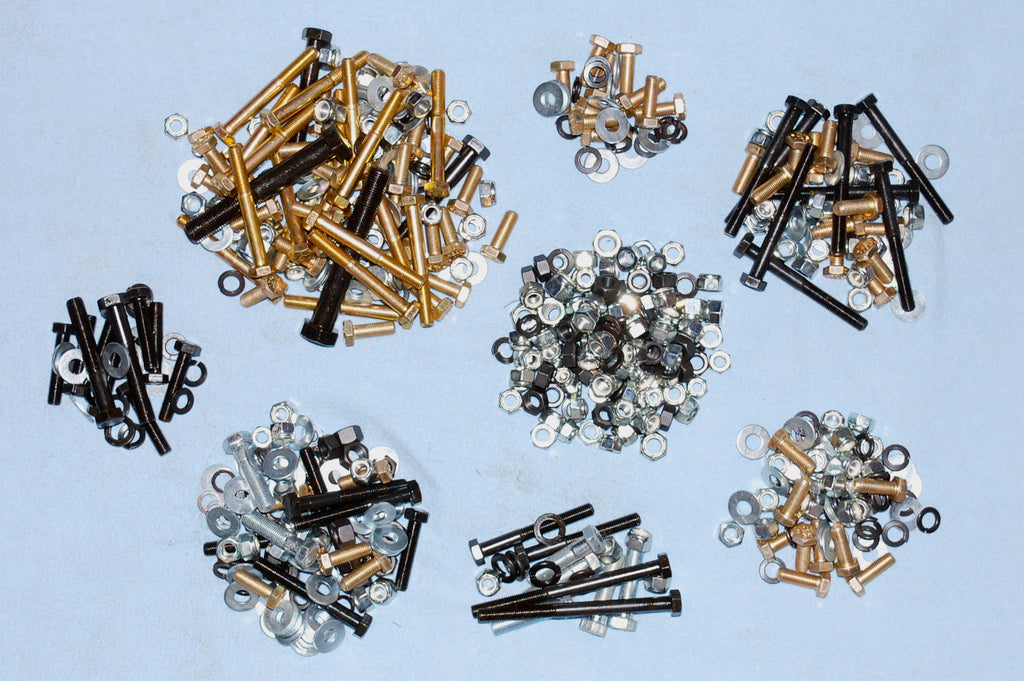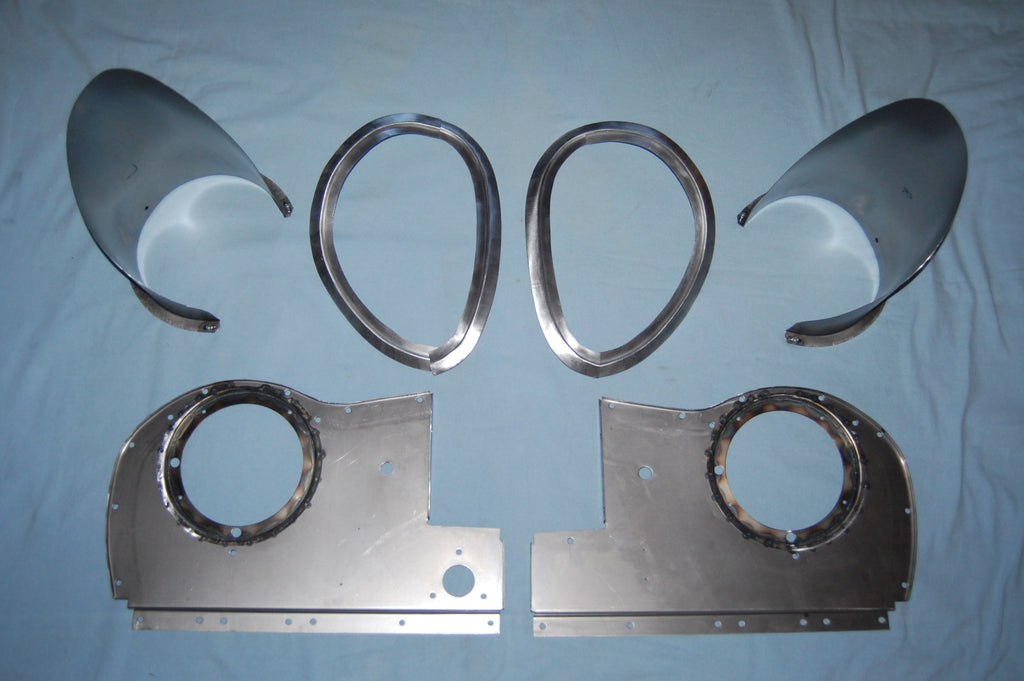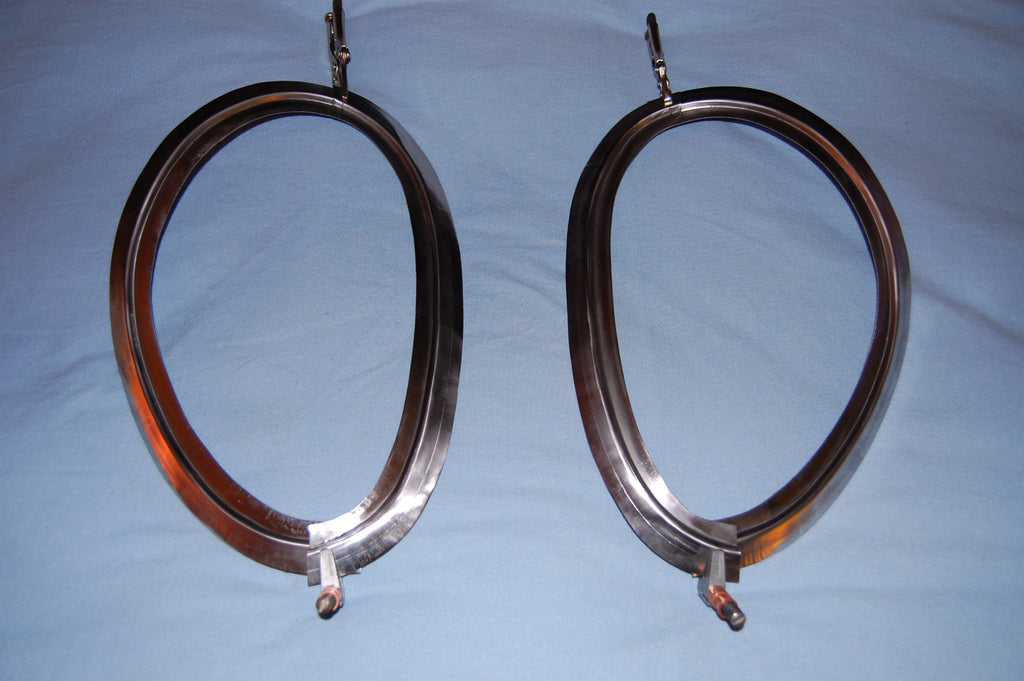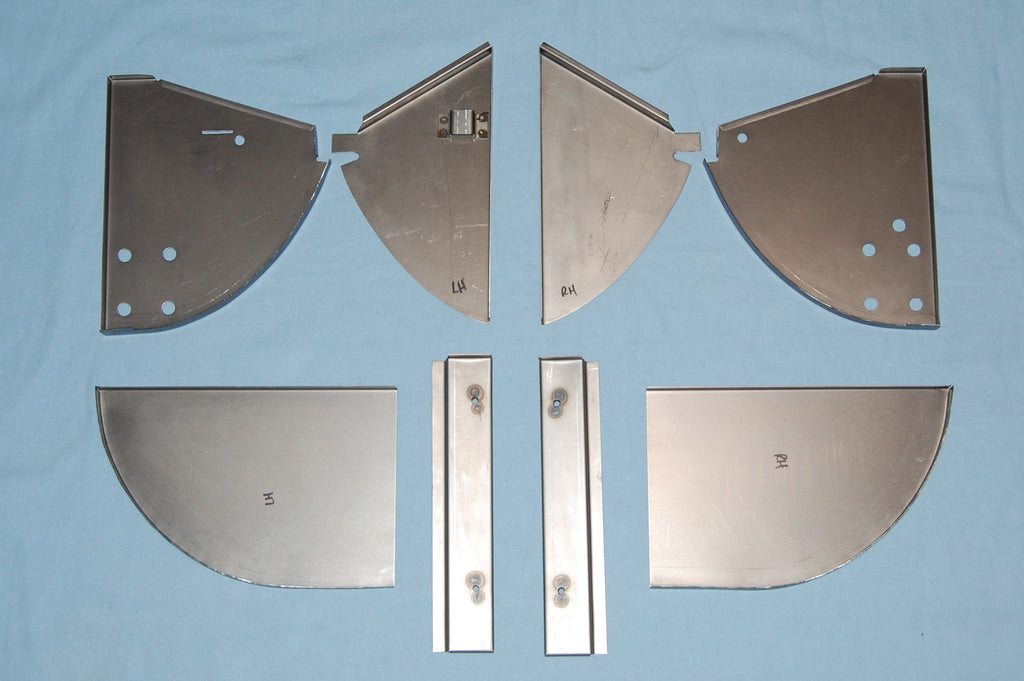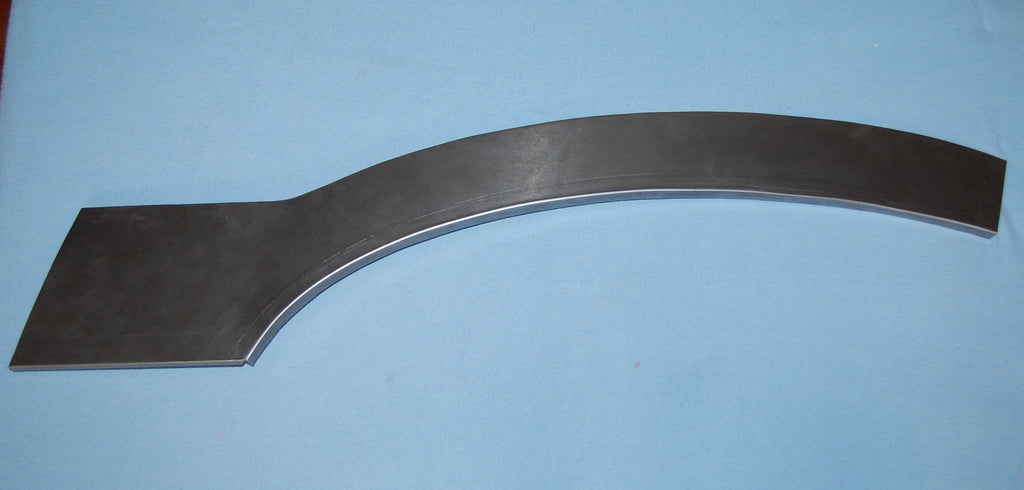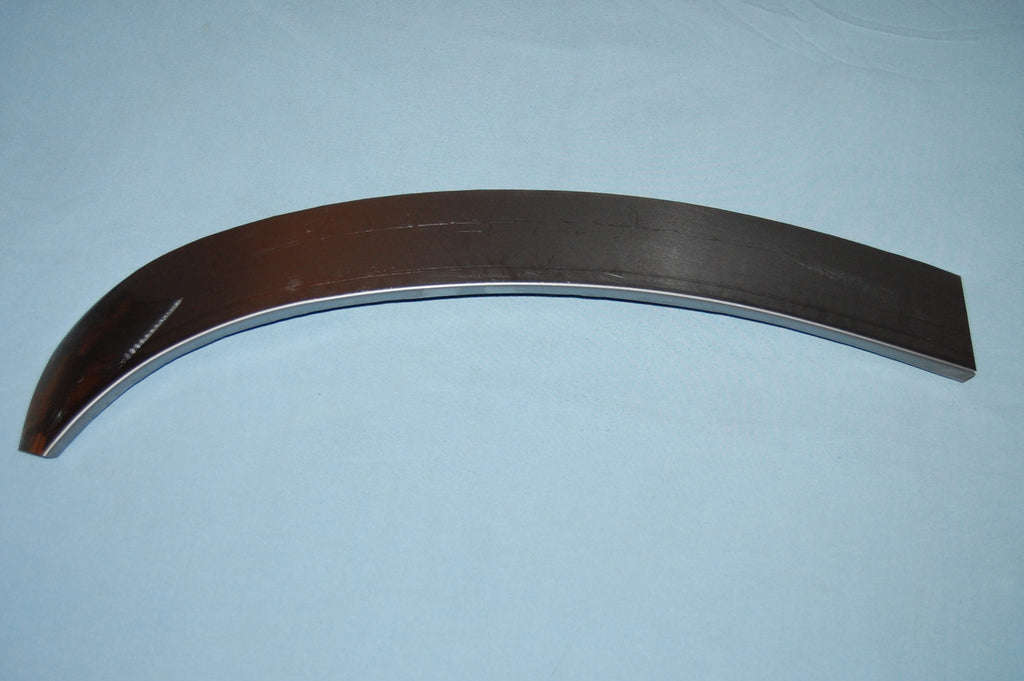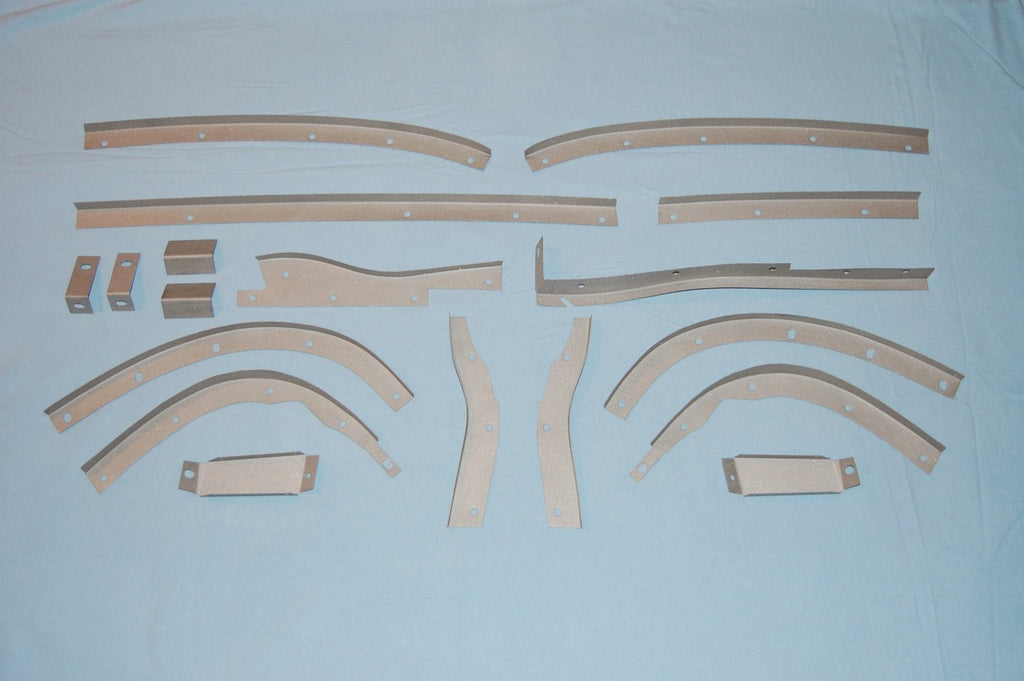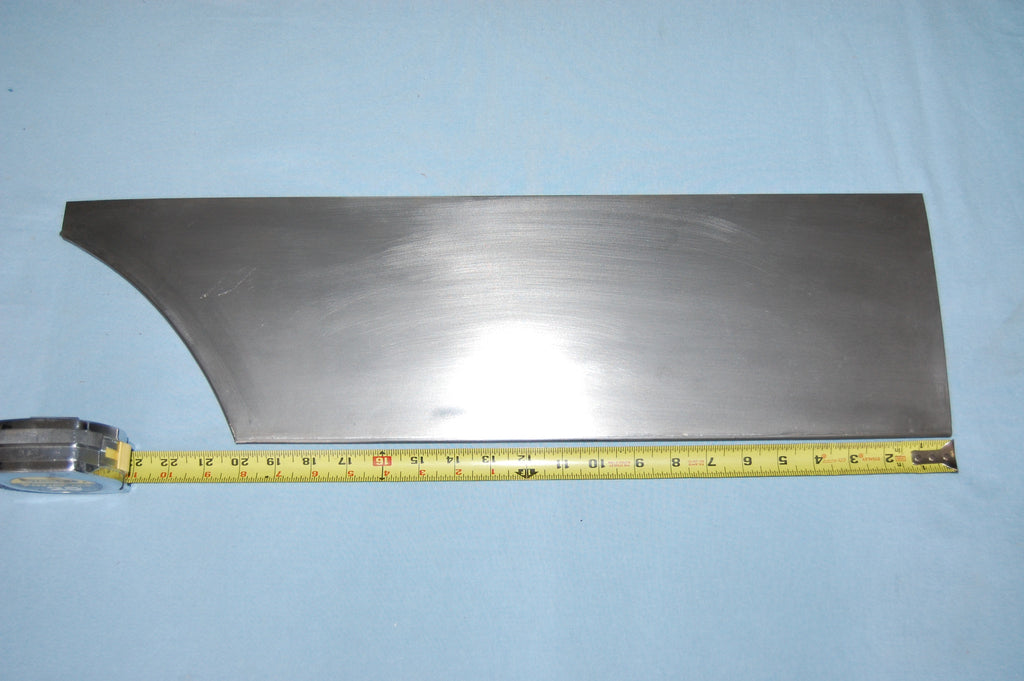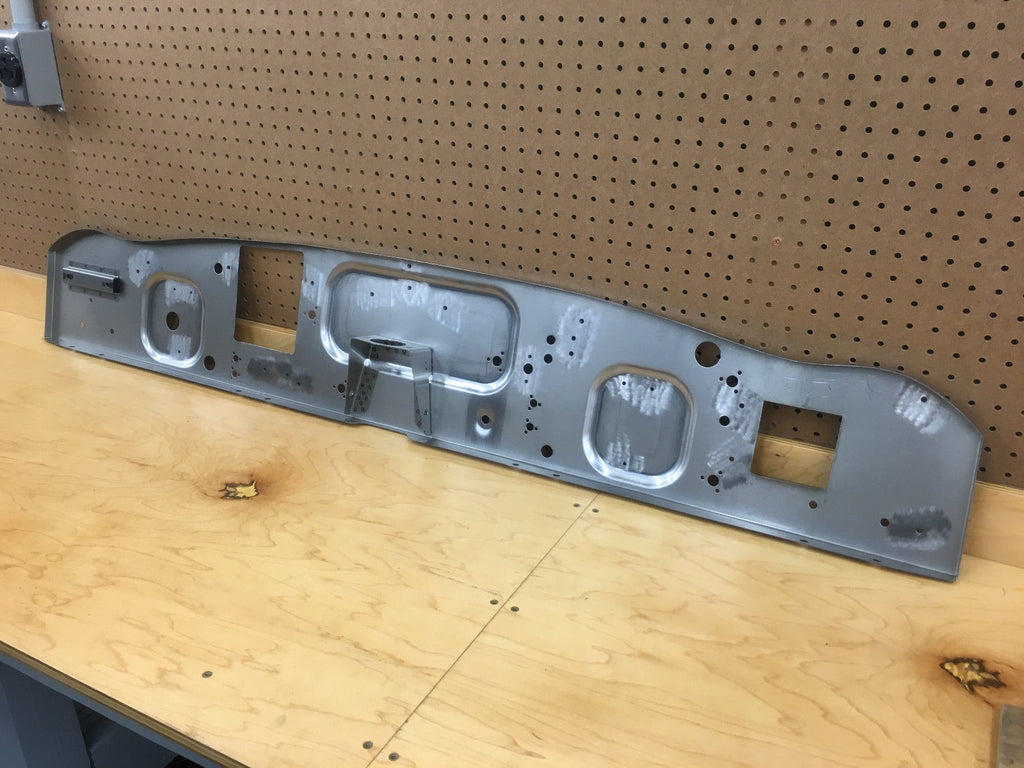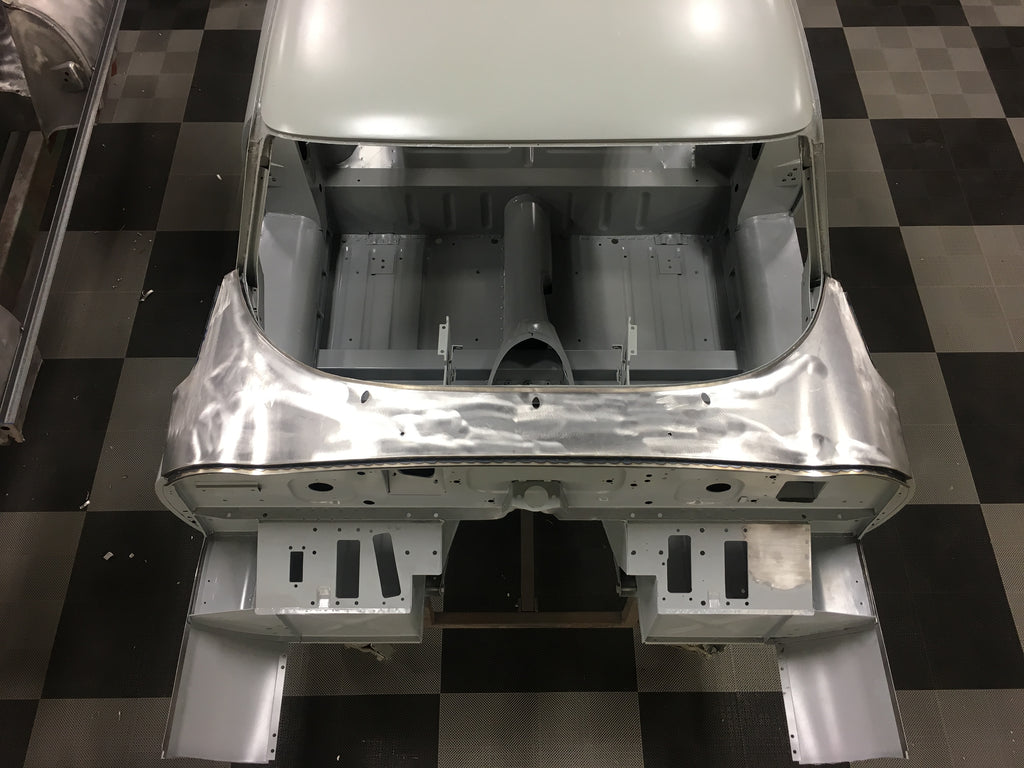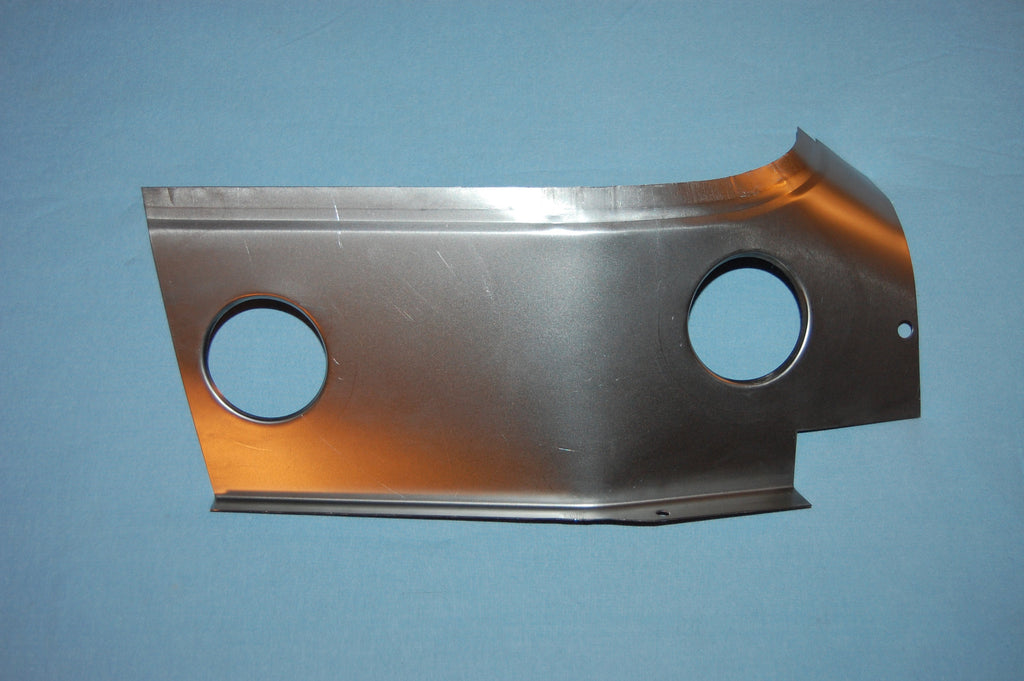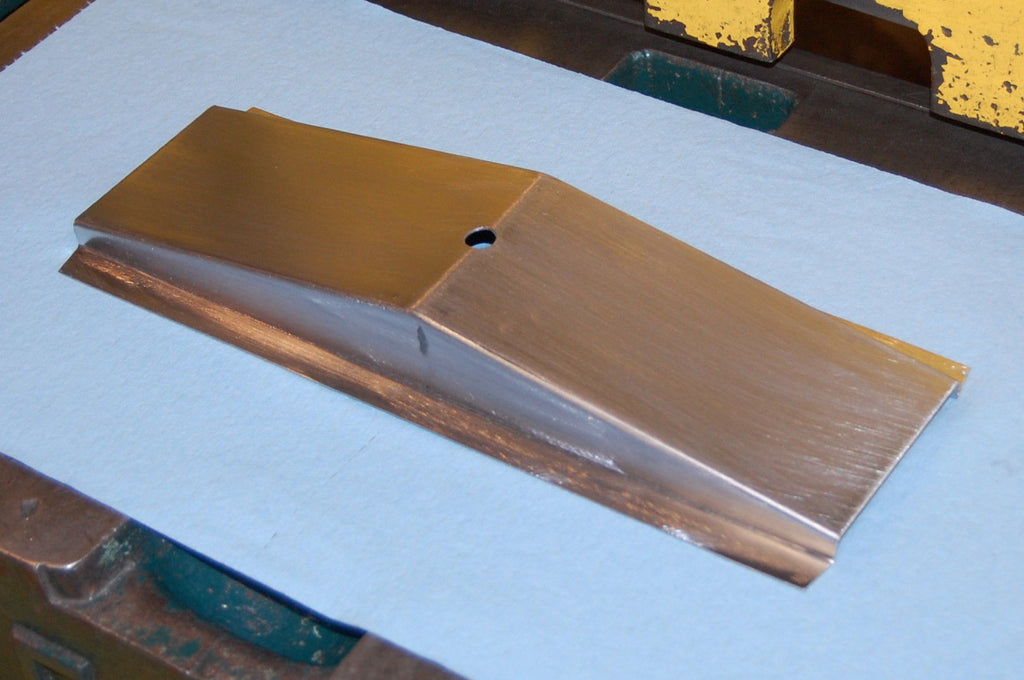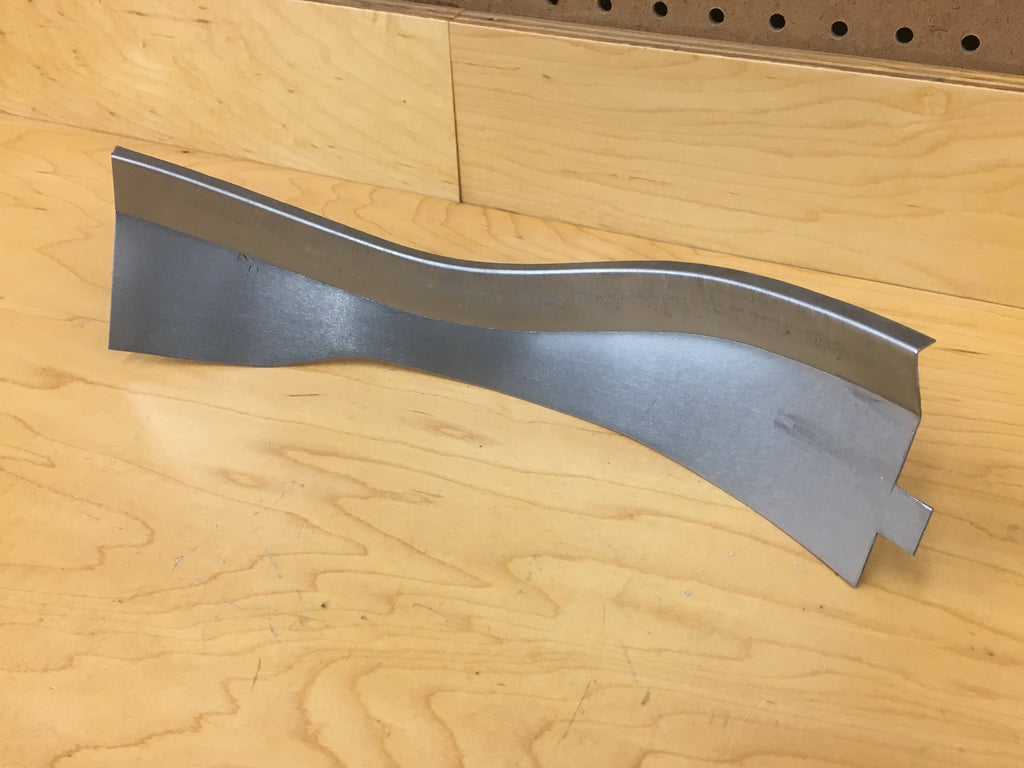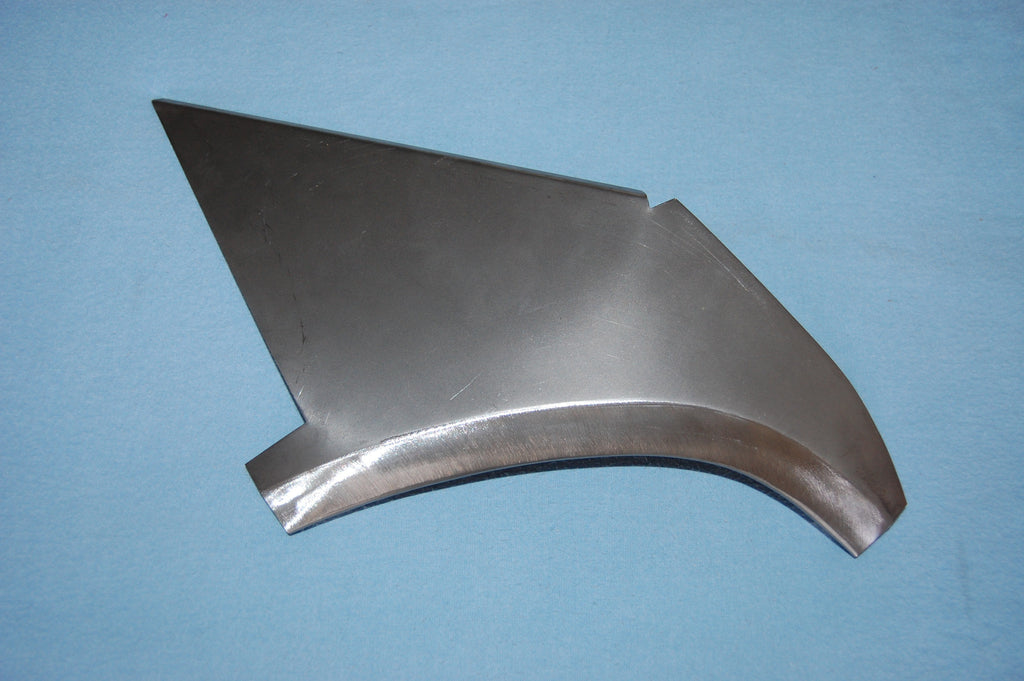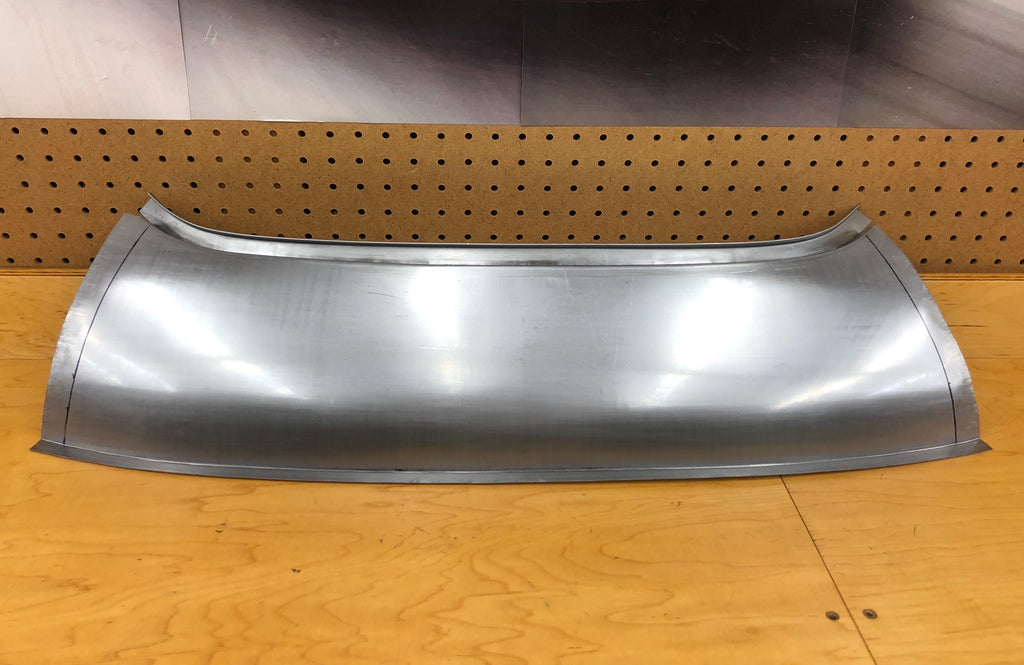Well, I guess I spoke to soon when I said this bonnet was the nicest original Series 1 bonnet I had seen yet – the splotchy gold coating of some type of older metal conditioner was hiding a MAJOR problem…
I went out into the shop one night this Winter to knock down this bonnet to get started on the project but also to make space – it was before the new building was up and the ’63 roadster (GW) was coming in a couple days. The bonnet came in only as an outer shell – just the center section, wings, and lower valance were bolted together. The inner valances and smaller panels and flanges were just in boxes, so I quickly took it apart and leaned the pieces up against a Series 1 coupe shell, and then cleaned the rest of the shop…
I’m kind of a “neat-nick” – I make a big mess when I work, but I like everything to be neatly organized just the same, so I am always subconsciously straightening things out, etc. As I was cleaning the shop, I noticed that the center section was leaning against the coupe body crooked, so I straightened it out… Then I noticed that the rear edge was not lined up straight on the floor – which has checkerboard tiles on it. So I straightened it out again… Then it got ugly…
The center section was warped. It had a long, slow twist to it, so that if you laid it on the floor, both rear corners touched, one front corner touched, and the other front corner stood off the floor 4 inches! You could grab it with your hands and twist it back to straight easily enough, and it seemed to be OK as part of a completely assembled bonnet, but I knew there was only ONE thing that could have done this, and I was afraid of what was coming next…
HEAVY SANDBLASTING – Someone in the past had sandblasted this bonnet with a MAJOR sandblast unit – like something you would use to blast down truck frames or graffiti-covered concrete! The heat from the abrasive sand, coupled with the high volume and pressure of the industrial blasting unit used, introduced a lot of heat into the panel and gave it this warpage. I immediately started running my bare hands over the flat sections on the sides of the power bulge, and not only did I feel the tell-tale “waves” from over-blasting, but there was something even WORSE being hidden by the splotchy gold coating!
As I closed my eyes and ran my hands over the top surface of the center section, which was blasted bare and had the flanges and all glue removed, I could FEEL the pattern of the flanges as a raised imprint! AAAAGGGGHHHHH!!!! At first, I thought these barbarians had blasted the bonnet assembled, and done so with so much force from the top that it formed the center section “around” the flanges, raising that imprint. That might be the case, but what I now think happened is that they pulled the bonnet apart, pulled the flanges off, and used the blaster to remove the remaining bonding agent. The bonding agent is flexible and blast media – including sand, bounces back off of it and it takes a lot to get it off with blasting – and so they just sit on one area and concentrate on it, all the while heating the metal and pounding it with high pressure sand!
Sadly – this type of damage is VERY hard to erase. You need to do a lot of shrinking and in just the right place, and it will never be “perfect” again for a show car – it will need filler in these flat areas for sure. So I called the customer and told him – not a fun call…


